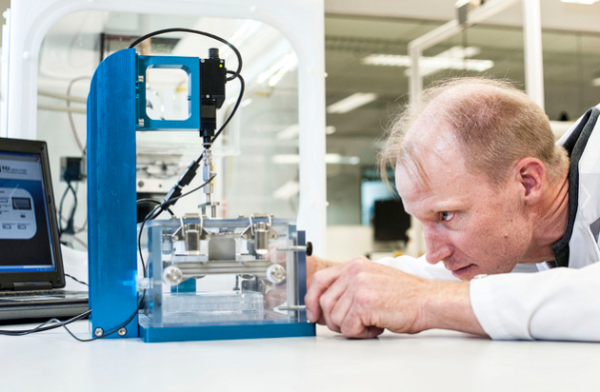The 3D bioprinting space, also known as biofabrication has been really heating up. It seems that every week we hear another story in which the technology is able to either save a life or make a life so much better. The  number of uses, as well as cases, that will eventually require bioprinting will only continue to expand as the technology matures. Because of this, there will be strong demand for jobs within the biofrabrication field.
number of uses, as well as cases, that will eventually require bioprinting will only continue to expand as the technology matures. Because of this, there will be strong demand for jobs within the biofrabrication field.
What many companies will begin to realize, is that there will likely be a lack in supply of those qualified for these new jobs. Four colleges, two in Australia, and two in Europe have decided to do something about this potential problem. They are launching the first ever program designed to provide a Master’s Degree in Biofabrication.
The four universities to offer this two-year master’s program are: the University of Wollongong in NSW, QUT in Queensland, the University Medical Center Utrecht in the Netherlands and the University of Würzburg in Germany. Students will actually receive two degrees once they graduate, one from an Australiania University and one from one of the two European schools. Each university plans to admit just 10 students to the program. They will graduate with a keen understanding of biofabrication, and leave with an expertise in the field.
“Graduates of the new higher degree will gain an international career and have the ability to lead this exciting medical revolution which is going to be particularly important for our ageing populations,” said Professor Hutmacher, who leads QUT’s biofabrication research.
Biofabrication or 3D bioprinting has already been used to replace bone, grow an ear, and regrow skin and human cartilage. As the technology progresses, many experts believe that there will come a time when an entire human heart or liver could be printed out for a transplant. Although these applications may still be over a decade away, these new degrees will give the researchers, doctors, and scientists of the future a major advantage if they choose to enter the field.
“Graduates will be at the forefront of an industry that will always be in high demand given the ageing of populations around the world and which cannot be easily replicated by any other country,” commented Hutmacher.
Applications will be open later this year for those wishing to enter the program. Are you considering applying? We would love to hear from you at the biofabrication forum thread at 3DPB.com
Subscribe to Our Email Newsletter
Stay up-to-date on all the latest news from the 3D printing industry and receive information and offers from third party vendors.
You May Also Like
3D Printing Financials: Markforged Reports Q1 2024 Results Amid $17.3M Patent Litigation Setbacks
Markforged (NYSE: MKFG) reported its financial results for the first quarter of 2024, marked by increased net losses and a decline in revenue. Despite launching a new 3D printer and...
Union-Private Company Alliance to Transform Construction 3D Printing in the Pacific Northwest
Construction 3D printing pioneer Alquist 3D has forged a strategic partnership with a consortium of industry leaders, including the Cement Masons and Plasterers’ Local 528, a union based in the...
Creality Launches Ender-3 V3 Plus: Bigger CoreXZ for Unprecedented Performance
Embracing a journey of innovation and excellence, Creality’s Ender-3 series has established a distinguished path in the field of 3D printing. From the entry-level Ender-3 V3 SE to the feature-rich...
Model No. Deploys Titan Pellet 3D Printers for Sustainable Furniture Production
Over the years, many designers have tried to create 3D printed polymer furniture. Early pioneers like Janne Kyttanen, Materialise’s MGX, and Joris Laarman have led the way with 3D printed...

































